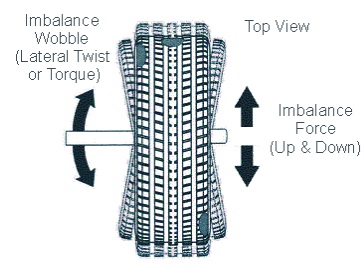
Snapshot: High speed stability and ride quality is also dependent on the wheels and is they are properly balanced or not. Read why is wheel balancing important and more about it!


Handling and dynamics of a car are a function of its suspension system, weight, wheelbase, track and other parameters which are more or less beyond control of the buyer once he has purchased the car. To prevent the car from losing its edge over time, you would need to maintain the wheels in their perfectly balanced condition. The article answers important questions revolving around wheel balancing.

Tyres need to be in contact with the roads for effective transmission of braking and acceleration forces. All forces that the tyres experience are transferred to some extent to the steering wheel too. Therefore, wheels (combination of rim & tyre) play a critical role in the overall dynamics of the car. Likewise, to maintain steerabilty, it’s important that tyres maintain contact with the road.
As the wheel assembly rotates around the centre, centrifugal forces act on the centre of the axel and it would all work naturally well if the wheels are perfectly balance. However, even with high precision manufacturing methods, weight imbalances cannot be avoided. And the weight imbalances shift the effective centre/axis of rotation of wheel assembly causing bouncing, wobble etc. which affects the handling and ride of the car. Wheel balancing is important not only from handling and ride perspective which can become extremely affected and uncomfortable, but also from safety perspective as car loses a stable base through which it can act/react to the forces.
Unbalanced wheels affect the ride and handling in the short term. If a car is allowed to run on unbalanced wheels for prolonged duration it can cause uneven tyre wear. In the long run, it can also damage to suspension and steering components causing expensive repair bills.

Wheels are balanced in two ways – Static and Dynamic. Static balancing implies that wheels are balanced at rest. It’s generally done using a bubble balancer where a wheel is balanced to ensure that up and down movement of the wheel is prevented with a weight that’s placed on the outer side of the edge of the rim.
In case of dynamic balancing, the heavy spots on the opposite sides are balanced by placing the appropriate weights which prevents the shimmy / wobble. Most modern balancing machines can balance the imbalance force (up and down) as well as the imbalance wobble (lateral twist) in one go. The machine advises to place appropriate weight on the outer and the inside edges.
Ideally, you should get balancing done every 10,000 kms as long as weights that are in place have not been disturbed. In case you drive through bumpy roads most of the time (that can cause more uneven wear), it’s advisable to do it more frequently (every 5000 km or so). It’s advisable to check the wheels for balancing every time when the tyre or rim is replaced.

Leave a Reply